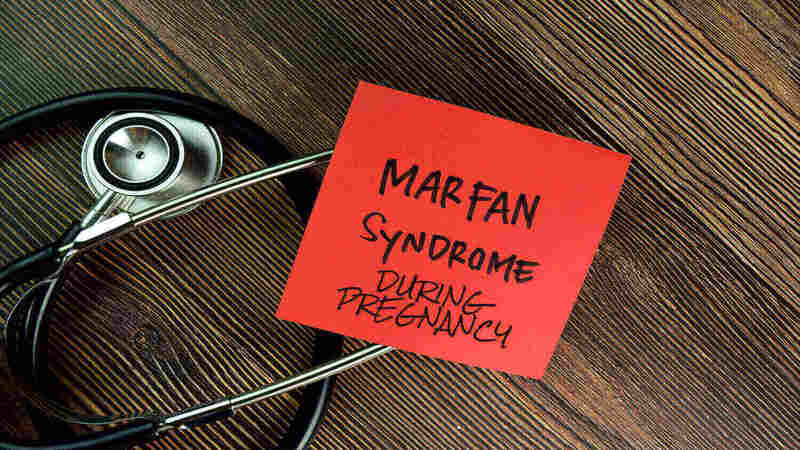
The general health condition of a woman plays an important role in a healthy pregnancy, delivery, and a stress-free postpartum period. But what happens if the mother has some genetic disorder? Obviously, it can lead to some nasty complications and jeopardize the health of the mother and the baby. One such health condition is – Marfan syndrome. Continue reading to know about everything related to Marfan syndrome and pregnancy.
What Is Marfan Syndrome?
Marfan syndrome is an inherited disease that impacts the connective tissues which support the organs and other structures in the body. Once the person inherits Marfan syndrome, their connective tissue lacks strength due to its abnormal chemical makeup.
This issue can impact various body systems, like the bones, eyes, skin, circulatory system, nerves, and lungs. The damage done by Marfan syndrome can be minor or severe.
If the main aorta in the heart is affected, then it can lead to life-threatening complications. Cardiovascular abnormalities due to this syndrome are highly serious during pregnancy as they can lead to serious heart issues.
Causes Of Marfan Syndrome In Pregnancy

Marfan syndrome is caused due to a mutation or defect that happens in the gene which produces fibrillin. Fibrillin is one of the key proteins essential to sustain the elasticity, strength, and functioning of the connective tissues in the body. A defect in the gene that produces fibrillin automatically affects the connective tissues giving rise to MFS.
Symptoms Of Marfan Syndrome In Pregnancy
Different people are affected in different ways by this disorder. The symptoms of Marfan syndrome vary significantly even in people of the same family. This is because, even though the defective gene is the same, different kinds of mutations can happen.
This phenomenon is also called the “variable expression”. Therefore, some people may have minor problems while others may develop complications that can be life-threatening. In the majority of the cases, the disease is known to get worse with age. The symptoms also vary relying on which part is affected.
Some of the common symptoms of MFS relying on the part of the body affected are:
Skelton
- Marfan syndrome can affect the long bones like the femur, bones in the lower and upper limbs of the skeleton
- A thin body frame and loose joints are one of the typical features of this syndrome
- The face appears long and narrow
- The top of the mouth may be arched. This may result in crowded teeth
- The sternum, which is the breastbone is either swollen or depressed. The chest, therefore, appears to be either sunk in or sunk out
- Scoliosis, the sidewise curvature of the spine is another significant symptom of this syndrome. The serious malformation can affect the working of the lungs and heart
- Flat feet is another symptom of this disorder
Eyes
- Displacement of one or both lenses of the eye
- Extreme nearsightedness and other vision problems
- Retinal detachment
- Can experience early glaucoma, a condition in which high pressure develops within the eye
- Early-onset of cataracts, resulting in blurred vision
Lungs
Lung complications are not very common even though the tiny air sac becomes less elastic due to connective tissue problems. However, the Marfan syndrome can result:
- Increased chances of lung collapse
- Sleep apnea
Heart and Blood Vessels
Most people who have Marfan syndrome have complications related to the heart and blood vessels.
- Heart murmurs happen due to slight leakage of valves
- An aortic aneurysm is a condition in which the walls of the aorta become weakened and stretched. The dilation of the aorta can be greater than 1.5 times that of the normal size. Aortic aneurysms cause weakness in the wall of the aorta and increase the risk of aortic rupture. Aortic rupture is a surgical emergency and has a high mortality even with speedy treatment
- Palpitation, fast and irregular heartbeat
- Shortness of breath, due to considerable leakage of the valve
- Fatigue
Nervous System
Dural ectasia is one of the major symptoms of MFS. A membrane known as Dura, which is made up of connective tissue, surrounds the brain and spinal cord. MFS affects this membrane, bringing about the ballooning or widening of the dural sac.
This can put pressure on the vertebrae, which is located in the lower spine, and leads to wearing off the bone encompassing the spinal cord. This can cause:
- Numbness and lack of strength in the legs
- Radiated pain in abdomen
Other Symptoms
- The appearance of stretch marks without weight variation
- Increased risk of developing an abdominal hernia
Treating Marfan Syndrome In Pregnancy

The pregnancy in a woman affected by Marfan syndrome falls under the “high-risk” category. There is no cure for Marfan syndrome. Therefore, the treatment focuses on preventing the various complications related to this disorder.
The treatment plan depends on the patient’s needs. The approach relies on the severity and the structures affected. To accomplish this, following your doctor’s advice and regular health checkups are mandatory throughout pregnancy.
- Regular checkups and ECG is used to evaluate the aorta and the function of the heart
- The doctor may recommend surgery to repair the aorta or replace a valve if the situation is critical. However, the decision relies on the mother’s health condition and the safety of the unborn baby
- Medicines, which will not cross the placenta, are prescribed in some cases, though the options are lesser
- The mother to be is closely monitored by an obstetrician
- It is necessary to have a balanced diet during pregnancy and this even helps with this disorder as it averts the risk of developing heart problems. So make sure that your pregnancy diet is rich in all the essential nutrients and they are present in the right amount
Did you suffer from any symptoms of Marfan syndrome during your pregnancy? What measures did you take to treat it effectively? Do share your experience in the comments section below.

